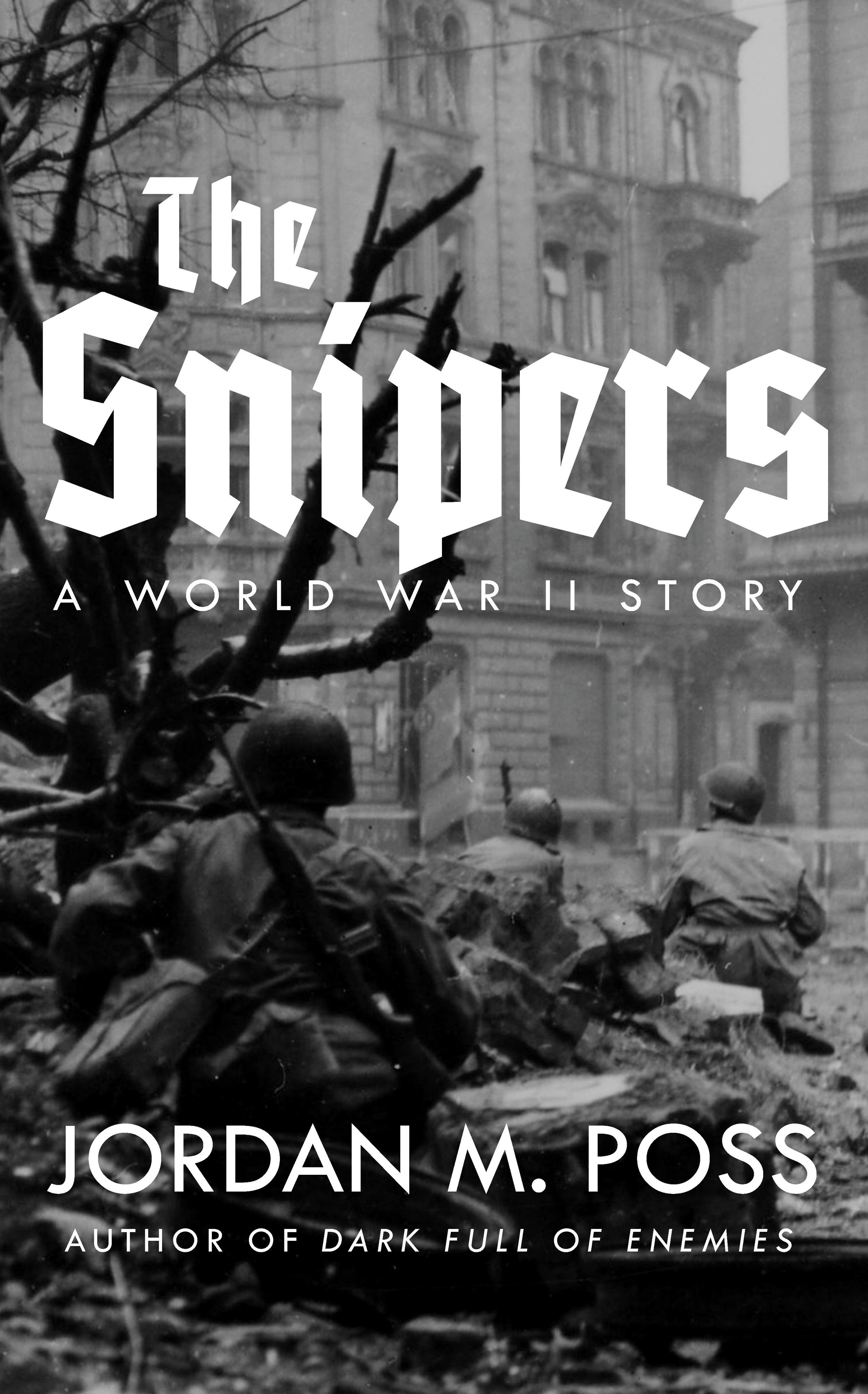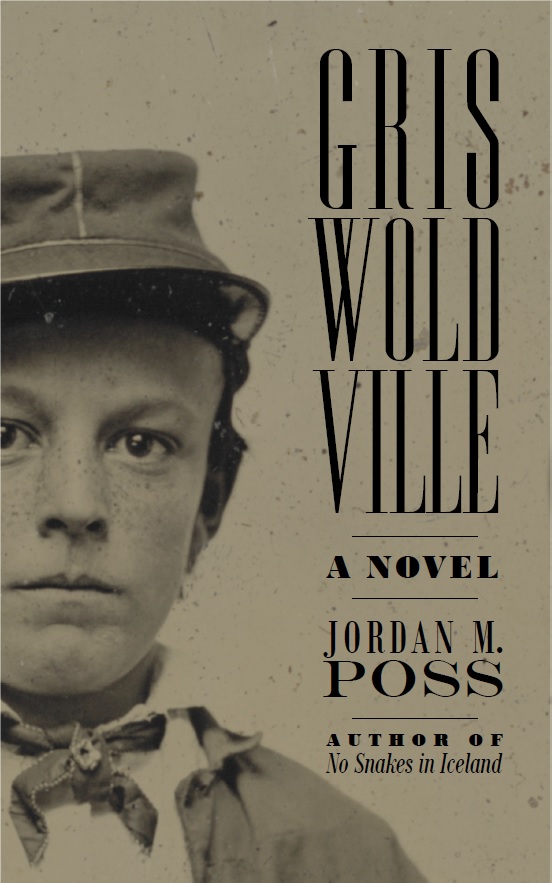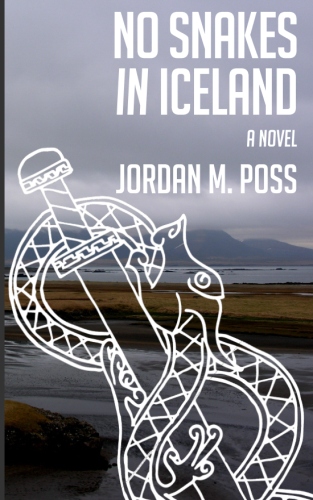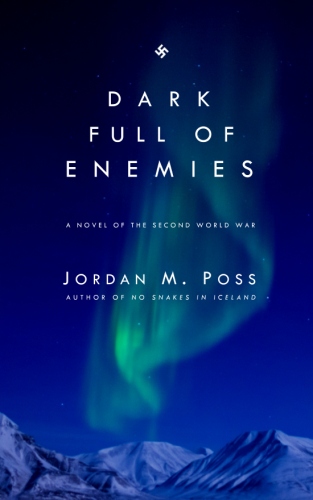The written equivalent of slow motion
/A common but tricky technique in writing action is to pause the action for a detailed description of something fast, minute, but important that is happening faster than the characters can react to it, then resuming the action—the written equivalent of slow motion. This technique, a frequent feature of virtually any thriller published in the last thirty years or so, is so common that it’s easy to miss how tricky it is to pull off.
One reason it might be easy to forget is that this technique is often executed clumsily in books that are already written clumsily. It’d be easy to pull examples from Brad Thor, Jack Carr, and especially Dan Brown. Instead, note the way this is done in a good book by a good author: The Shootist, by Glendon Swarthout.
Here’s how the novel’s climactic saloon shootout begins:
Rising at his table in the left rear corner, tipping his chair over backward, Jay Cobb drew the Colt’s on his right thigh and fanned and fired three times at J. B. Books.
His first round missed its mark. It hit the cash register, slicing the first column of keys from the machine, then ricocheted upward and off the ceiling.
His movement triggered another. Serrano on the instant pulled his Peacemaker from beneath the table, turning in his chair. In the interval between Cobb’s first and second rounds, Cross-eye shot the youth through the chest.
Cobb fired a second round at Books while falling across a table, and a third while writhing in agony to the floor.
His second round struck the mirror behind the bar. A split of quicksilver spread from end to end.
His third blew three shelves of glassware into a phenomenon of light. A cascade of shards tinkled brilliantly to the floor and bar top.
The effects of low-velocity slugs fired at close range from weapons of heavy caliber, .38s and .45s, are massive. Serrano had sent a bullet through Jay Cobb's rib cage from the right side at a distance of nine feet. After encountering bone, entering the chest cavity anteriorly, the slug tumbled through the lower lobe of the left lung, macerating it, before exiting posteriorly through the rib cage on the left side, tearing an exit wound the size of a fist. With such force was the round driven into and through and out of the body that bits and pieces of bone and shirt were found adhering to the rear-wall mural the following day, together with gobbets of lung tissue, pink and gray in color.
Jay Cobb lay still upon the floor. He was not, however, dead.
The beginning and end work well—they are direct and hard-hitting. But in that long penultimate paragraph we back away from what is happening to these characters for a lesson in ballistics followed by an explanation of things that could only be known from a postmortem. Shortly afterward, Books finishes a drink, leans over the bar, and finishes off Cobb:
He died instantly. The bullet was fired from above and from the rear, an oblique trajectory, at a range of seven feet. It penetrated the temporal bone above and forward of the ear, exposing the brain, passed through the brain, carrying with it segments of skull, and exited through the right orbit, or eye socket, taking off the ethmoid plate and the bridge of the nose. On the tile floor under what remained of Jay Cobb’s face lay an eyeball and the brain matter which housed the accumulated knowledge of his twenty years, a grayish, adhesive slop of girls and kings and arithmetic and cows and prayer and mountains but primarily of how to fire a revolver accurately and hate himself and deliver milk and cream and butter.
Later, as the gunfight develops and more men are killed and wounded, we pause mid-action over and over, about half a dozen times in a few pages, for such descriptions. A sample:
Pulford’s soft-lead slug, fired from sixteen feet, had passed completely through his left shoulder, missing fortunately the subclavian artery but cracking the clavicle and tearing the deltoid muscle and the upper margin of the trapezius. His left arm was stunned and useless.
And:
The bullet struck Jack Pulford in the heart.
He was staggered by the impact, driven against the wall, and slumping down it, continued to fire randomly at Books, emptying the Smith & Wesson into the bar instead. This firing was reflexive, an act of tendon spasm rather than conceived assault. The gambler was dead before he attained a seated position, back to the wall. Books had fired from sixteen feet. His round had entered Jack Pulford's white silk shirt near a diamond stud slightly to the left of the sternum, or breastplate, and torn through the antrioventricular groove. The heart was literally cleaved in two.
And:
The round was well placed. It entered in the intercostal space between the ribs, missing the spine but mangling the paravertebral muscles, and exited by breaking out a wide swatch of the sternum, or breastbone. Koopmann dropped the Colt’s, hugged his chest, and staggered several more steps toward the doors. But the aortic root had been transected, severed by the bullet.
Note that I’ve cut all of these descriptions down, sometimes by several sentences before and after.
It’s fair to ask why a writer might bother with this technique at all. A long answer would involve giving the reader specific information when it’s needed, provoking a response in the reader through some carefully chosen detail, heightening a particular emotion, managing the rhythm of a scene—or just about anything else. The short answer is that any tool at the writer’s disposal may prove useful, depending on what he’s trying to do.
Swarthout’s point, not just in this scene but throughout the book, which concerns the more and physical consequences of a long life filled with violence and the danger of a new generation choosing to live the same way, is to horrify.
With that in mind, this technique works, but only through the blunt expedient Stephen King calls “going for the gross-out.” I remember thinking even at the time that I first read The Shootist that this was a technical misstep. Having considered it a lot over the years, I see three things wrong with it:
First, it’s overwritten. One of the dangers of overwriting is unintentional humor. The final passage quoted above runs several more lines and ends with “he was practically exsanguinated.” As opposed to only partially exsanguinated, I guess.
Closely related, the language is inappropriately clinical. The characters, in the moment, don’t know what precisely is happening to their subclavian arteries and ethmoid plates and paravertebral muscles. Notice how much more forceful “The bullet struck Jack Pulford in the heart” and “His left arm was stunned and useless.” This is all the characters know and all we need.
Third, and the point I began with, it stops the action dead and, given my first two points, it does so without a good reason. By this point in the novel Swarthout has created tense, unbearable suspense, but then he repeatedly interrupts the explosion of violence that should bring catharsis.
As a result, this frequent freeze-framing proves self-defeating. The interrupted momentum of the action and the cold medical language have a distancing effect that undermines the intense personal and moral horror Swarthout has striven to create in the reader. Instead of feeling the tragic cycle of destruction, a cycle that will begin again rather than end in this saloon, the reader simply thinks “Ew.”
Again, The Shootist is a good book. If it were as thoroughly clumsy as anything by Dan Brown I wouldn’t have noticed and wouldn’t have cared. But I can’t think of this book without thinking of the herky-jerky rhythm and tonal inconsistency of what should have been a short, brutal conclusion.
Two thoughts on how this technique might have been used differently in this instance:
First, avoid it. Don’t pause the action at all. Technical information, e.g. a weapon’s destructive power, is better set up before it’s ever threatening a character. My novella The Snipers has an excursus or two about the effects of bullets on the human body similar to that first passage of The Shootist, but not while the characters are in the middle of being shot at. When the danger arrives, the reader already understands what the danger is.
Or, given the power of this technique if used well, it could be improved by using blunter, less clinical language, excising all the technical explanations of how the bullets are blasting these men apart and focusing instead on their shock or pain. This is one of the few times when less precision would be better.
This has been on my mind this week because I’ve been reading Len Deighton’s Bomber. The story of a single day during World War II, Bomber follows RAF bomber crews, German fighter pilots, and German civilians in a small town on the (accidental) receiving end of a bombing raid, and Deighton uses this technique over and over again: for a bomber torn apart by a German fighter’s cannon fire, for a plane brought down by a bird strike, for a target marker dropped in the wrong place. My reaction every time has been a feeling of dread or a sickening “Oh no!” rather than frustration.
What makes this literary slow-mo work so well in Bomber, as opposed to The Shootist:
Deighton establishes from the first chapter omniscient narration that can shift at will, so such passages are not a surprise or interruption when they occur during, say, the climactic bombing mission, and
Deighton’s pauses are technical when appropriate, sensory when appropriate, and whether technical or purely experiential, they always support the emotional tone of a scene.
Deighton combines this technique with many others, especially foreshadowing and dramatic irony, meaning the pauses in his action connect meaningfully with other elements of the story in the reader’s mind.
I’ve focused on action in this post, but this technique is common across all fiction, and there’s much, much more that could probably be said about it. Seeing it done both poorly and well by good authors should be instructive.












